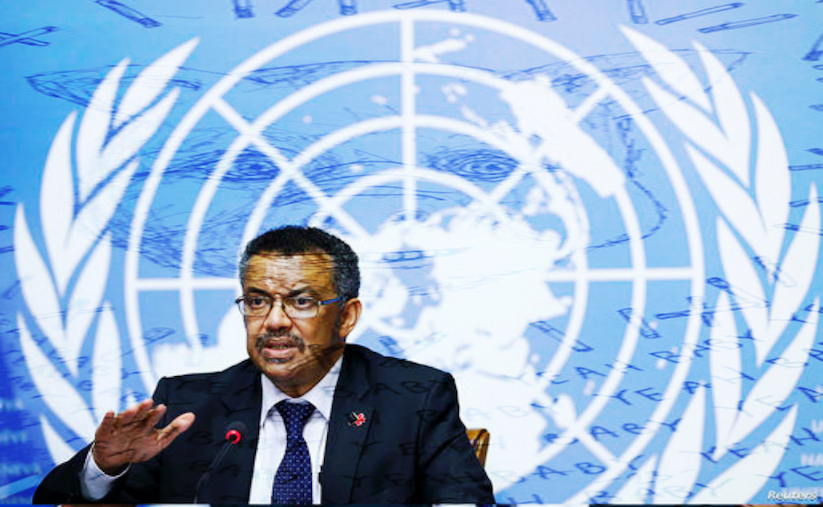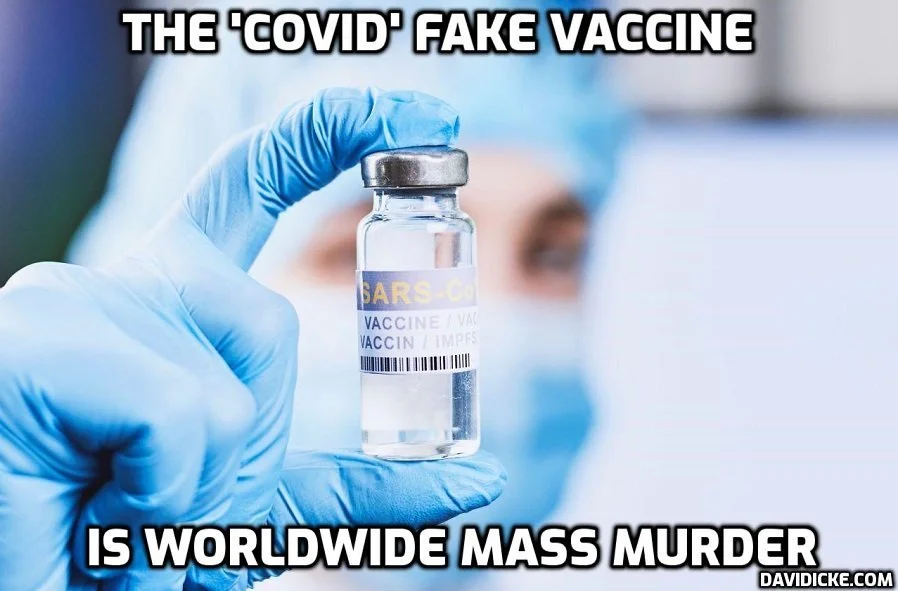Did MoneyPox Arise Naturally? Evidence Suggests US/China Authorities Created the Virus, Its Treatment and "The Emergency" [reality construction] for More Liability Free Profit and Control Over Sheeple
/STORY AT-A-GLANCE
By the third week of July 2022, some 16,000 cases of monkeypox had been recorded across 75 countries, with the vast majority of cases occurring among homosexual and bisexual men. In the U.S., recorded cases were around 3,000, including two children
July 23, 2022, World Health Organization Director-General Tedros Adhanom Ghebreyesus unilaterally overruled this panel of advisers and declared monkeypox a “public health emergency of international concern” (PHEIC). Ghebreyesus made the decision to declare a PHEIC even though the WHO’s advisory panel opposed the declaration 9 to 6
According to Ghebreyesus, “for the moment this is an outbreak that is concentrated among men who have sex with men, especially those with multiple sexual partners. That means that this is an outbreak that can be stopped with the right strategies in the right groups”
At present, the PHEIC appears to be financially motivated. Moderna is testing an mRNA injection for monkeypox, and in addition to the two smallpox vaccines already approved, Aventis Pasteur also has a smallpox vaccine that, while still investigational, could receive emergency use authorization
Disturbingly, in February 2022, the Wuhan Institute of Virology published a study in which they describe creating a portion of a monkeypox genome from scratch in order to develop a PCR test for monkeypox diagnosis. The National Institutes for Health in the U.S. also began studying a monkeypox drug in 2020
From [MERCOLA] and [PDF] Ever since the first European cases of monkeypox were confirmed in early May 2022, many suspected smallpox or monkeypox would become the next global pandemic to justify continued tyranny and the World Economic Forum’s Great Reset.
Indeed, in early December 2021, media started signaling that smallpox might be the next pandemic. As it turns out, monkeypox1 is the same family as smallpox,2 but is nowhere nearly as lethal.
By the third week of July 2022, some 16,000 cases of monkeypox had been recorded across 75 countries, with the vast majority of cases occurring among homosexual and bisexual men. In the U.S., recorded cases were around 3,000, including two children.
As we saw with COVID-19, health authorities claim many of the infections have no known source of infection, suggesting it may be spreading in unknown ways. With COVID, they blamed it on “asymptomatic spread,” which was always a complete fallacy. Time will tell what they come up with here.
Monkeypox Declared a Public Health Emergency
As reported by The New York Times,3 as of late June 2022, World Health Organization advisers still did not recommend issuing an emergency declaration for smallpox, in large part because “the disease had not moved out of the primary risk group, men who have sex with men, to affect pregnant women, children or older adults, who are at greater risk of severe illness if they are infected.”
One month later, the panel was still deadlocked in disagreement, with six supporting a declaration and nine opposing it.4 Despite the lack of consensus, July 23, 2022, WHO Director-General Tedros Adhanom Ghebreyesus unilaterally overruled this panel of advisers and declared monkeypox a “public health emergency of international concern” (PHEIC).5
That same day, the National Coalition of STD Directors also urged President Biden to follow the WHO’s lead and declare monkeypox a national public health emergency, and to allocate $100 million in emergency funding.6
According to Ghebreyesus, six versus nine “is very, very close,” and “Since the role of the committee is to advise, I then had to act as a tie-breaker.”7 In the real world, six versus nine is not “a tie.” So, clearly, the director-general was driven to act based on something else, and this silly justification was all he could come up with.
Importantly, the “public health emergency of international concern” declaration gives Ghebreyesus a number of distinct powers, including the ability to recommend how member states should respond to the outbreak, which of course includes the recommendation to mass vaccinate. As reported by The New York Times:8
“The WHO’s declaration signals a public health risk requiring a coordinated international response. The designation can lead member countries to invest significant resources in controlling an outbreak, draw more funding to the response, and encourage nations to share vaccines, treatments and other key resources for containing the outbreak.”
Monkeypox Virus Made by Wuhan Institute of Virology
In other words, “here we go again,” as predicted. And, as with COVID, there’s evidence that we may not be dealing with something that arose accidentally and naturally.
As discussed by Dr. John Campbell in the featured video, the Wuhan Institute of Virology (WIV) in China and the National Institutes of Health in the U.S. have coincidentally been working on the monkeypox virus and its treatment9 for some time.
The NIH, which has identified monkeypox as a potential bioterrorism agent, is currently studying the safety and efficacy of an antiviral called tecovirimat for the treatment of monkeypox. The study in question began September 28, 2020, and will run through the end of September 2025.
Meanwhile, the WIV published a study10 in February 2022, in which they describe creating a portion of a monkeypox genome from scratch in order to develop a PCR test for monkeypox diagnosis.
As explained by Campbell, they created a section (fragment) of the monkeypox virus’ genome in order to use that as a quantitative polymerase chain-reactive (qPCR) template. Curiously, the paper states that, because there’s never been a monkeypox outbreak in China, “the viral genomic material required for qPCR detection is unavailable.”
So, they created a version of the monkeypox genome on their own, using synthetic techniques such as viral DNA recombination. They basically built a new genome by stitching it together using a variety of (presumably known) gene sequences. The new DNA construct is then reproduced by growing it in yeast, and that yeast is subsequently used to assess the veracity of the PCR test.
Why did they choose this route? The monkeypox virus is readily available in several laboratories around the globe, most notably Africa, but also other countries, so why didn’t they just get it from one of those? As noted by Campbell, the idea that they have to synthesize their own virus because it’s unobtainable is simply not believable, and therefore raises a number of concerns.
What’s more, the paper even warns that “this DNA assembly tool applied in virological research could ... raise potential security concerns ... especially when the assembled product contains a full set of genetic material that can be recovered into a contagious pathogen.”
Now, to be clear, they did not create a full-length genome in this study. The genome fragment they used was only one-third of the full genome of the monkeypox virus, and this was supposedly done to prevent the accidental reverse engineering of an infectious virus. Still, it raises concerns about the risks inherent in creating synthetic viruses.
Prepare for Another Round of Fearmongering — and Vaccinations
Not surprisingly, the U.S. Centers for Disease Control and Prevention is already urging those who may be at high risk for monkeypox — including those who attended the “Daddyland Festival” in Texas over the Fourth of July weekend — to get vaccinated.11
New York City started administering the smallpox vaccine in late June 2022. That’s not a typo. There is no specific monkeypox vaccine. They’re using the smallpox vaccine under the assumption that it might work because the two viruses are in the same family of pox viruses, but there’s very little evidence for this.12
The idea that smallpox vaccines may be effective against monkeypox comes from a 1988 non-randomized observational study13 in which 0.96% of vaccinated close contacts contracted monkeypox, compared to 7.47% of unvaccinated close contacts.
Two of the biggest problems with this assumption are that a) the vaccine used in that 1988 study was a first-generation vaccine that is no longer in use, and b) the current strain of monkeypox has undergone many mutations since 1988. So, there’s really no telling whether the vaccine will have any benefit at all.
As noted by Ira Longini, Ph.D., a biostatistician at the University of Florida and a WHO adviser, “The truth is, we don’t know the efficacy of any of these monkeypox vaccines.”14 Such facts notwithstanding, by July 22, 2022, some 18,000 New Yorkers had already received their first dose of smallpox vaccine.15
Two Types of Smallpox Vaccines in Use
There are currently two types of smallpox vaccine available in the U.S.:16 ACAM2000, which contains live replicating but weakened vaccinia virus and Jynneos (also sold under the names Imvanex and Imvamune), which uses a live but non-replicating modified vaccinia Ankara virus.
Jynneos was approved by the U.S. Food and Drug Administration in 2019 and is indicated for smallpox and monkeypox in adults aged 18 and older.17 Since it doesn’t contain replicating virus, it’s thought to be less hazardous than ACAM2000, but there’s no guarantee.
It’s also not supposed to spread the virus, which is something that can occur with ACAM2000 (which is using a live replication-competent virus). Those who receive ACAM2000 have to take careful precautions, for a full month, to avoid spreading the virus to others.
ACAM2000 is known to produce severe side effects, including myocarditis at a rate of 5.7 per 1,000 vaccinees.18 Jynneos is “believed” to have a lower risk for cardiac adverse events, but time will tell whether that’s true. As with the COVID shots, those getting Jynneos are basically volunteers in a vaccine trial, whether they realize it or not.19
Disturbingly, HIV-positive subjects who participated in Jynneos clinical trials saw a rise in HIV virus counts.20 Today, gay men are the primary recipients of this vaccine, and they’re also a group that tends to be more prone to have HIV-AIDS. So, there may be significant risks to this vaccine in this particular group.
The U.S. Department of Health has a stockpile of more than 200 million doses of ACAM2000, and they’ve vowed to provide some 296,000 doses of Jynneos, but it’s unclear which of the two vaccines is currently being administered.
If someone you know has received the ACAM2000 vaccine, be sure to take the same precautions as you would with someone who is infected with monkeypox (see below).
The hazard of live vaccines was recently made evident by a case in which an unvaccinated individual contracted polio from a person who had received an oral live poliovirus vaccine.21 (The U.S. only uses inactivated polio vaccine, but live polio vaccine is still used in many other countries.) So, if ACAM2000 were to be widely used, and people fail to take proper precautions, outbreaks of smallpox could be possible.
Aventis Pasteur also has a smallpox vaccine that, while still investigational, could still receive emergency use authorization.22 It too is replication-competent, and therefore could create outbreaks if used extensively.
At present, the WHO is not recommending mass vaccination,23 primarily because the smallpox vaccine is known to have its risks. According to the WHO, good hygiene and safe sexual behavior are, for now, your best prevention against monkeypox. I suspect that may change in time, however, especially considering Moderna is now working on an mRNA monkeypox injection.24 Preclinical investigation is already underway.
How to Protect Yourself Against Monkeypox
The monkeypox virus is spread via close contact with infected bodily fluids, not through the air, so to protect yourself against it, be sure to:25
Avoid close, skin-to-skin contact with an infected person. This includes avoiding kissing, hugging, cuddling and sex
Do not touch the rash or scabs
Don’t handle or touch the bedding, towels or clothing of an infected person
Do not share eating utensils or cups with an infected person
Frequently wash your hands with soap and water, especially after contact with sick people
If you are infected with monkeypox, isolate at home and avoid close contact with people and pets while you have active symptoms, such as rashes. On a side note, Campbell is concerned that the virus may start spreading to house pets and other animals found in suburban areas, such as squirrels, which could result in monkeypox becoming endemic in the West as it has been in Africa.
Interestingly, while monkeypox has historically resulted in painful rashes and pus-filled lesions all over the body, in most current cases, the lesions are localized to the genital and anal regions. So, clearly there are some differences between the current outbreak and the monkeypox of old.
Avoiding sexual contact appears to be a primary strategy to avoid infection at present, and that goes for women as well. While many are dismissing monkeypox as a “gay disease,” doctors warn that “anyone can get it.”26
This makes sense, since not all men who have sex with men are exclusively homosexual. Bisexuals who have sex with both genders will sooner or later spread it to female partners, and children can also be affected through skin-to-skin contact.
According to the CDC, the two children in the U.S. who were diagnosed with monkeypox had contact with “individuals who come from the men-who-have-sex-with-men community.”27 That said, homosexual and bisexual men and their partners are undoubtedly in the highest-risk category. As noted by Ghebreyesus:28
“Although I am declaring a public health emergency of international concern, for the moment this is an outbreak that is concentrated among men who have sex with men, especially those with multiple sexual partners. That means that this is an outbreak that can be stopped with the right strategies in the right groups.”
The Financial Incentive Behind Monkeypox
COVID-19 has arguably been the greatest profit maker for Big Pharma of all time, and monkeypox is undoubtedly viewed as a similar future profit maker. The sad reality is, there’s so much liability-free money to be made in pandemic vaccines, they’re not likely to give up on them, and that requires keeping the world in a more or less constant health emergency.
As COVID fatigue is setting in and people are increasingly resisting the shots, monkeypox allows for a brand-new cycle of fear porn to be spun, and for new experimental vaccines to be rolled out. This, I fear, is why Ghebreyesus unilaterally decided to declare monkeypox a global health emergency.
Ghebreyesus may also be trying to push the pandemic treaty forward. Either way, his behavior is a foretaste of what we can expect if that pandemic treaty becomes reality. As noted by Dr. Robert Malone in a July 23, 2022, Substack article:29,30
“Clearly, the WHO committee did not reach the desired decision to declare a PHEIC, and so for some extraordinary reason Tedros stepped in ... Tedros’ statements clearly demonstrate that he unilaterally substituted his own opinions for those of the convened panel, raising questions of his objectivity, commitment to process and protocol, and whether he has been unduly influenced by external agents.”
In short, Ghebreyesus is acting like a corrupt dictator, and it’s not difficult to figure out who the beneficiaries might be. In a recent review31 by Pandemics Data Analytics (PANDA), they detail the corruption by the WHO, global leaders and governments around the world during the COVID pandemic. As noted by Malone:32
“This review empowers you with key information to help you assess the WHO’s candidacy as an authoritative global public health organization ... It is a must-read by anyone who is interested in public health, the global COVID-19 WHO policies that almost all nations followed, and the full extent of the corruption ...”
There’s no doubt the WHO should not be given the sole authority to make medical decisions for the whole world, and Ghebreyesus’ decision to “break the tie” when there really wasn’t one is a perfect example of what can and probably will happen if the WHO is given that power.
Sources and References
4, 5, 6, 7 STAT News July 23, 2022
12, 17, 18 Medium June 11, 2022
16 The Hill What to Know About Smallpox Vaccines for Monkeypox
27, 28, 29 RW Malone Substack July 23, 2022









































































































































































































































































